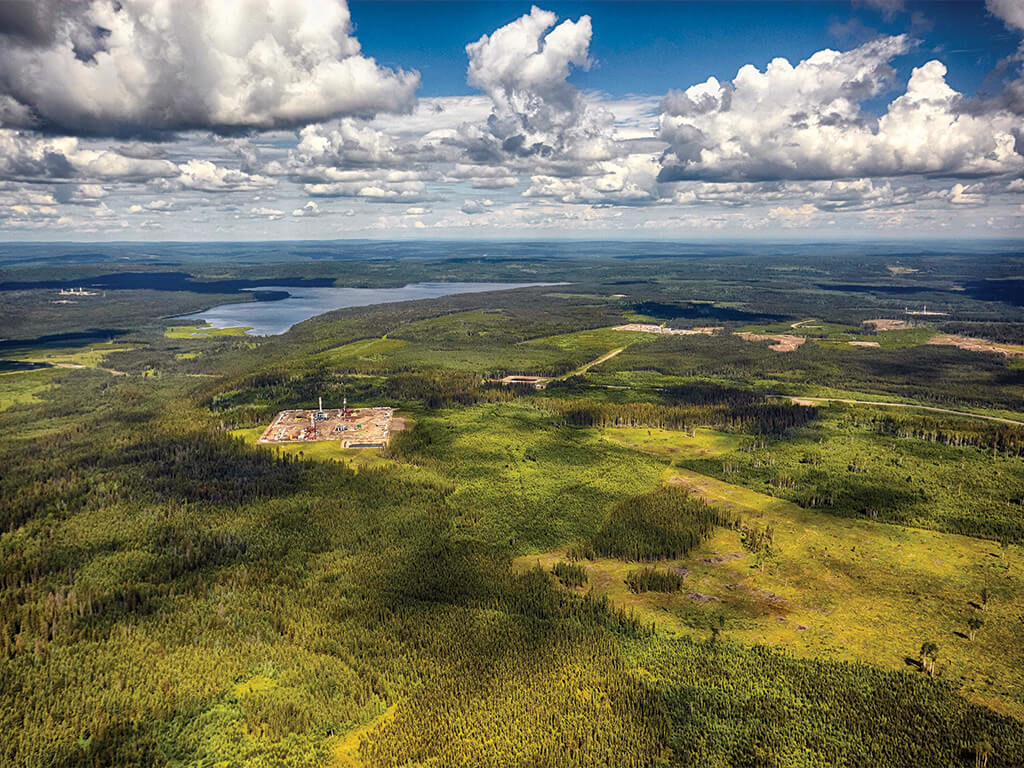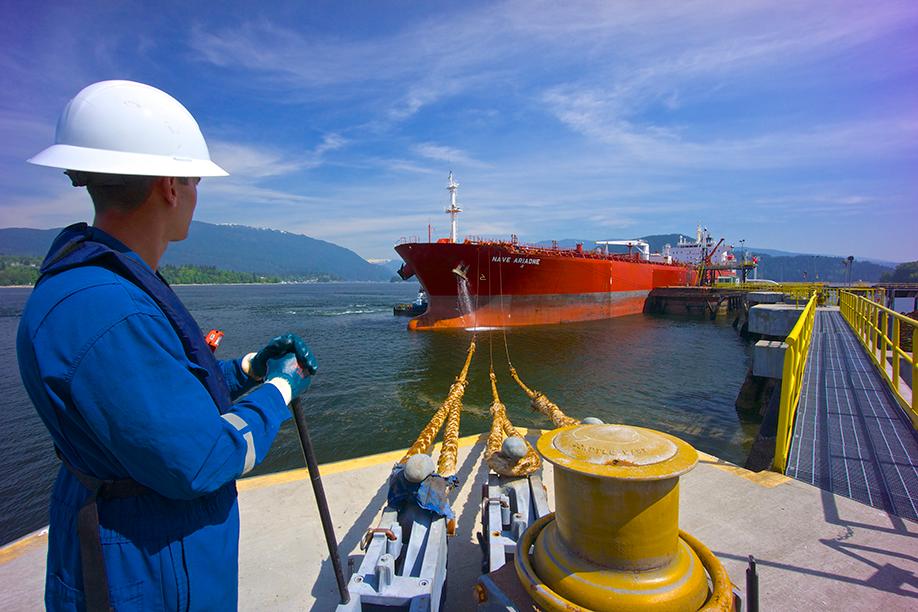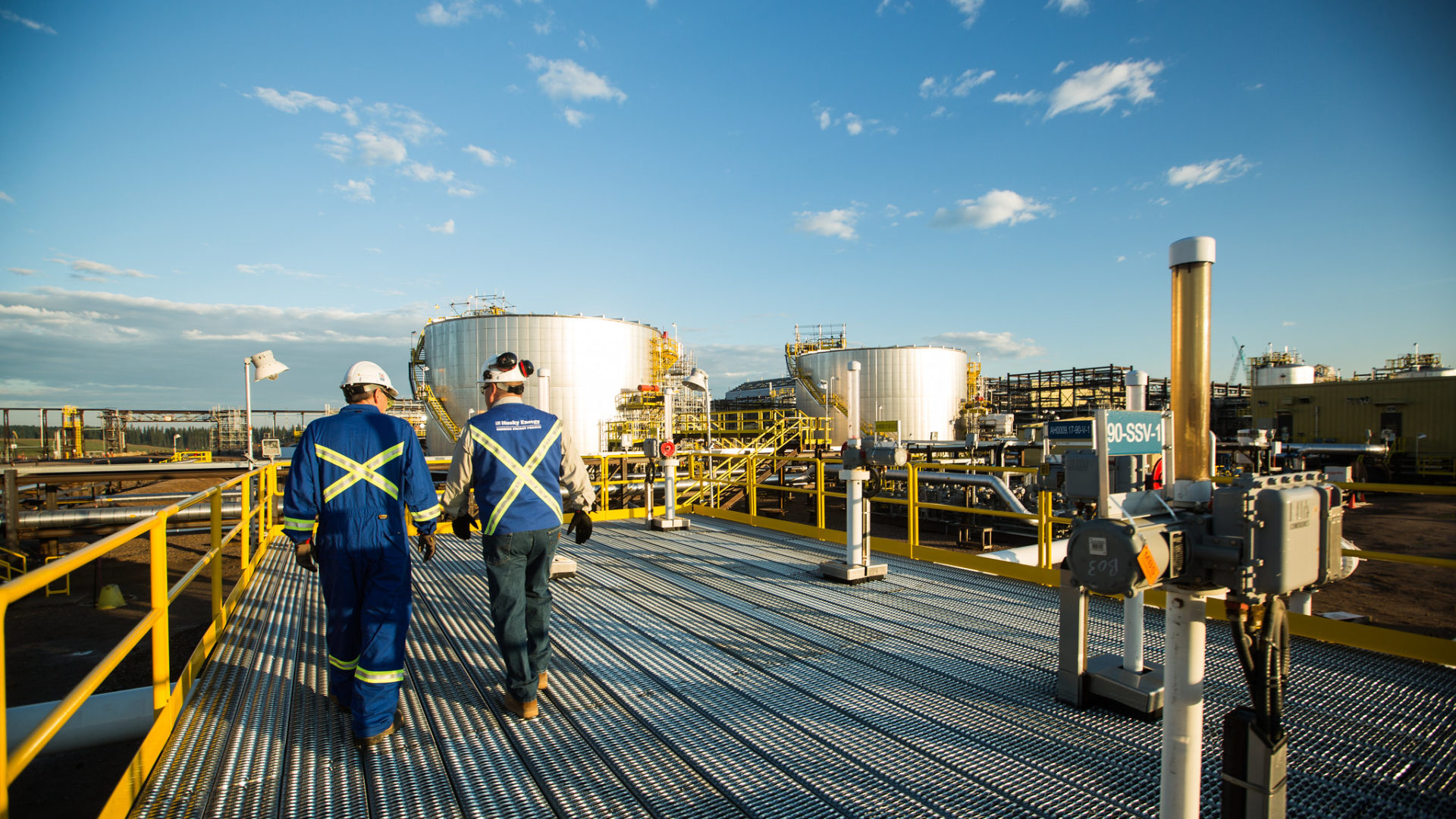Calls to slow down or shut down Canada’s oil and gas industry do not consider the substantial benefits it provides to Canadians and to the world.
Fact: Oil and gas development is good for Canadians
Oil and gas delivers economic and social prosperity for Canadians including jobs, government revenues that help pay for roads, hospitals and schools, and substantial investment in community programs. And it’s not just in the major producing provinces – it’s across the country.
The oil and gas sector directly and indirectly employed approximately 599,000 Canadians in 2019, according to Natural Resources Canada. This includes jobs related to production as well as in the industry’s supply chain, which stretches from coast to coast.
According to the Canadian Association of Petroleum Producers, in 2019 the oil sands sector alone spent over $4 billion with 2,711 businesses outside of Alberta, including $2.4 billion with 1,302 companies in Ontario, $760 million with 585 businesses in Quebec, and $534 million with 513 companies in B.C.
Federal, provincial and municipal governments across Canada benefited from $493 billion in revenue from oil and gas operators from 2000 to 2018, according to CEC research. That’s an average of about $26 billion per year to support government spending priorities.
Oil and gas companies also invest substantially in the communities where they operate, providing funding and volunteer support in areas such as the arts, environment, education and health.
According to BMO Capital Markets, the oil sands sector alone spends approximately $80 million per year to support community resilience programs, education/skills development, as well as Indigenous and youth engagement.

Fact: Exporting Canadian oil and gas helps the world
Most of Canada’s oil and gas production is exported, right now almost exclusively to the United States.
It’s a lucrative business, with a cumulative value of over $1.9 trillion between 1988 and 2019, according to CEC research. And that’s with essentially just one customer. Completion of the Trans Mountain Pipeline Expansion and the LNG Canada/Coastal GasLink projects will meaningfully open global markets to Canadian oil and gas.
The exports don’t just benefit Canada in terms of jobs and revenues. Natural gas shipped as supercooled LNG can be used to replace coal-fired power generation in emerging economies in Asia and India, significantly reducing greenhouse gas emissions.
Power generated in China with LNG from Canada would result in emissions reductions of 34 to 62 per cent compared to coal, according to a study published in the June 2020 edition of the Journal for Cleaner Production.
As of 2020 there were 350 new coal-fired power plants under construction in the world, including 184 in China. The LNG Canada project alone could reduce emissions in China by the equivalent of shutting down 20 to 40 coal-fired plants.
In both oil and natural gas, Canada’s environmental, social and governance (ESG) performance is ranked highest among the world’s top reserve holders, according to BMO Capital Markets’ analysis of the Yale Environmental Performance Index, the Social Progress Imperative, and World Bank Worldwide Governance Indicators.
ESG includes environmental metrics like greenhouse gas emissions and water use, as well as measures like worker safety, representation of women, Indigenous people and visible minorities, and board diversity.
If Canada does not produce and export oil and gas, global demand will be met by other countries including places like Saudi Arabia and Russia, which are far less transparent and not as committed to ESG leadership.
Fact: Canadian oil and gas is up to the challenge of reducing its footprint
Canada’s oil and gas sector has an extensive list of successes in reducing its environmental footprint, from water use and land disturbance to greenhouse gas emissions intensity.
For example, Canada’s major oil sands producers decreased fresh water use for drilled projects by 44 per cent between 2012 and 2019, down to just 0.2 barrels of water per barrel of oil.
The average oil sands emissions per barrel dropped by approximately 22 per cent over the last decade, and leading producers are on track for a further 16 to 23 per cent reduction over the next decade, according to Alberta Environment and Parks. A number of oil sands projects already have a carbon footprint that is below the average crude consumed in North America.
The success so far in reducing emissions per barrel “paves the way for bold climate commitments, including net zero and near net zero goals as announced by some of our members,” according to Canada’s Oil Sands Innovation Alliance.
Overall, Canada is responsible for just 1.5 per cent of global GHG emissions.

Fact: Oil and gas benefits Indigenous people in Canada
The notion that Indigenous people in Canada broadly oppose oil and gas projects is becoming an increasingly hard sell, as many First Nations communities are not only realizing the benefits of working with industry, but looking to stake their own claims on energy projects.
CEC research found that First Nations involved in Canada’s oil sands industry have a pronounced positive effect upon their employment and unemployment rates, employment income, and their reliance on government transfers. Oil sands producers continue to increase spending with Indigenous-owned businesses, reaching a record $2.4 billion with 275 companies in 2019.
CEC analyzed the positions of some 250 First Nations in B.C. and Alberta likely to be impacted by oil and gas development and found the majority were in either in support or offered no objection, compared to a mere handful that were opposed.
But while increased partnerships provide obvious mutual benefits, some First Nations leaders are leading the charge to control of their own destiny through ownership of major energy projects.
Perhaps most significant are competing bids by two First Nations coalitions looking to acquire a majority ownership stake in the $12.6 billion Trans Mountain pipeline expansion in B.C. and Alberta.
Fact: Canada has a decades-long opportunity to thrive in the global oil and gas market
Oil and gas will continue to dominate global energy markets for decades to come, according to all credible forecasts including by the International Energy Agency (IEA).
Under the IEA’s Sustainable Development Scenario (SDS), which aligns with the goals of the Paris climate agreement, global oil demand declines to 66 million barrels per day in 2040, from 98 million barrels per day in 2019. Meanwhile, in the SDS natural gas demand decreases to 344 billion cubic feet per day in 2040, from about 390 billion cubic feet per day in 2019.
But as the IEA notes, the SDS scenario is not playing out.
What is more likely to play out is what the IEA calls its Stated Policies Scenario (STEPS), which reflects existing and announced policy frameworks.
In STEPS, both oil and natural gas demand is expected to increase, driven by population growth and emerging economies in India and Asia. Global oil demand is expected to increase to 104 million barrels per day in 2040, while natural gas demand increases to 505 billion cubic feet per day.
Canada has the opportunity to be the world’s oil and gas supplier of choice long into the future.
